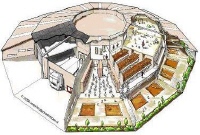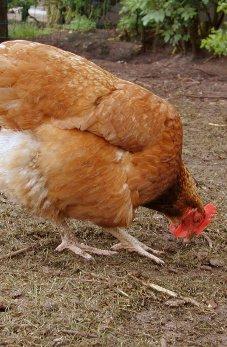Laying Hen Husbandry: creation of a vision and vision
| Function / Domain: | Agriculture |
| Illustration of: | Process of vision creation for a research programme; Guiding principles; Target scenarios; Criteria for a good vision applied in a pilot/experiment |
Context and connection with landscape developments
The Laying Hen Husbandry project arose from a request by the Dutch Ministry of Agriculture to Wageningen University and Research Centre (WUR). The request was to develop new concepts for livestock farming with input from other parties. The background was the social challenge facing the Dutch livestock farming sector, which is under pressure to innovate in order to address issues such as animal diseases, animal welfare, environmental problems, public health and increasing competition. The researchers were used to explore solutions based on old ideas that focused on maximising production and minimising costs. Environmental aspects and animal welfare were made to fit in with that. Consequently, their results did not adequately meet the combination of challenges.
Vision creation: process and guiding principles
The project leaders in Wageningen decided to concentrate on poultry farming. Two project managers started the process with an interdisciplinary team of employees of the university. Yet, they consulted everyone connected with the sector, including poultry farmers, policy assistants of the Ministry of Agriculture, employees of the animal feed industry, veterinarians, egg producers, egg dealers, civil society organisations and individuals, including children, seeking their views and opinions about how poultry farming should be run.
The researchers added their own specialist input about animal welfare (when does a chicken feel well?), an important aspect for innovation.
Persistent questioning
Through persistent questioning, the researchers were able to question superficial assumptions and identify possibilities for new solutions. For example, poultry farmers initially felt that the cost price of eggs had to be as low as possible. They regarded any benefit for hens or citizens as simply an additional cost item. But the real concern was whether they could generate sufficient revenue and they could also achieve that by selling ‘premium eggs' for a slightly higher price. Persistent questioning of individual consumers produced useful information about what they meant by ‘keeping chickens as naturally as possible'. They wanted the animals to have as much freedom as possible. That would also ultimately benefit the consumer, they felt, because the hens would be healthier.

Due to the in-depth discussions ways could be identified of matching the wishes of the different stakeholders. At the same time, the researchers also identified various structural bottlenecks. The researchers then concentrated on what was technically, economically and culturally feasible. They tried to find creative solutions for structural problems and in the process produced two new designs for a poultry farming system. One of them is the Roundel (‘Rondeel' in Dutch), see the illustration above.
The vision compared with the criteria for a good vision
In terms of the criteria for a good vision, the following points can be made about the Roundel:
- The design is a specific elaboration of general principles (list of requirements) for a new type of housing system.
- The most innovative aspect of the Roundel concept relates to animal welfare. The hens can display their natural behaviour. There are special areas where the hens can forage and explore; the hens can also choose between different climate zones. Many citizens can identify with this system.
- The technical aspects of the design are robust and it is economically feasible, although it took a lot of puzzling to reach that point during the design process. Many questions needed to be addressed: how much extra can an egg produced by the new farming system cost? when will the new system generate sufficient income for the farmer? The solution found in the Laying Hen Husbandry project was a combination of new, less expensive solutions and a far closer connection to a market where the eggs from the system could generate a larger margin than usual as a separate product.
- The University of Wageningen's success in producing a realistic and appealing concept is apparent from the fact that the Roundel concept has already been adopted by a number of actors, who have formed a company called Rondeel BV and have build and operate this type of system (see www.rondeel.org). Rondeel farms can now be found in the Netherlands, but also in Spain, Brazil and China.
Sources
